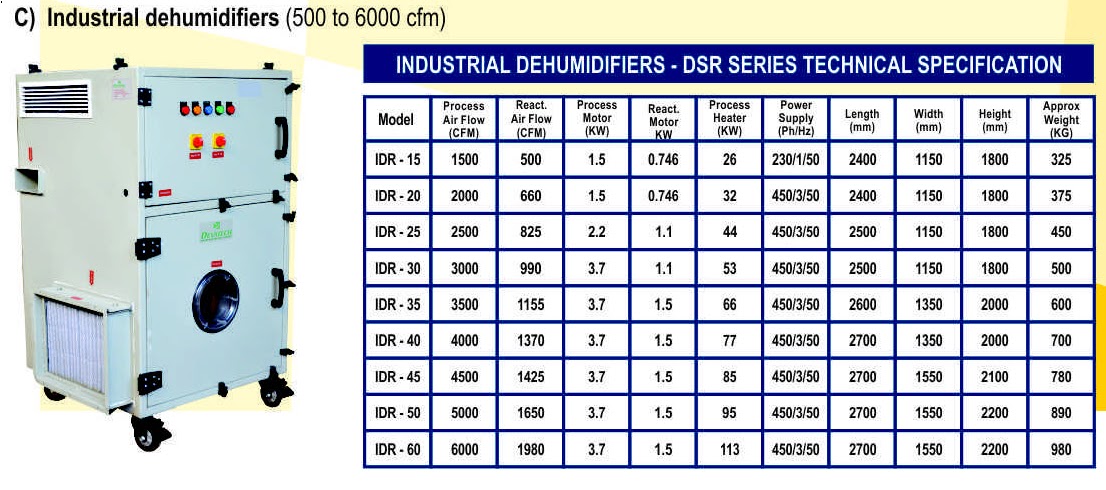Energy
Efficient Recirculating Dehumidifier
Advanced Humidity Control
The Commercial
Dehumidifier is an ultra-efficient dehumidification system that combines the
benefits of desiccant dehumidification and mechanical cooling. The system
design permits the capture of condenser heat (normally rejected as waste) to
power desiccant dehumidification. The Dehumidifier units provide low dew point
air at space-neutral dry-bulb temperature. Multiple standard Dehumidifier unit
sizes are available from 300 to 10,000 cfm and unit design may be further
customized to match required dehumidification capacity. Operation is fully
independent of space temperature control so target humidity levels are maintained
regardless of space cooling or heating demand.
BENEFITS
Commercial Desiccant Dehumidifier
- · Unmatched dehumidification efficiency
- · Temperature-neutral operation provides effective refrigeration capacity
- · Capable of lower dew points than conventional technology
- · Prevents mold, mildew and dust mite growth
- · Independent humidity control maintains comfort at higher dry-bulb set point
- · Preserves building materials by lowering equilibrium moisture content and eliminating condensation or other collected water
HOW IT WORKS
The core of the dehumidifier
is a refrigeration loop coupled with a desiccant dehumidification wheel. In
dehumidification mode, return air passes first through the evaporator coil
where it is cooled and typically experiences some dehumidification and then
through the desiccant wheel where the air is dried to a low dew point. In the isolated
regeneration section of the unit, outdoor air is used to capture rejected condenser
heat and regenerate (dry) the desiccant wheel. The wet air exiting the regeneration
half of the desiccant wheel is exhausted.
Units are typically
designed so that cooling through the evaporator coil matches re-heat through
the desiccant wheel to provide for temperature-neutral operation and to
facilitate parallel operation with equipment used for sensible temperature
control. Optional post heating or cooling is used to further control the supply
air conditions if required. The use of the desiccant wheel following the section ensures the lowest possible supply air
dew points with significantly less energy consumption than the typical process
of over-cooling followed by reheat.
SPECIFICATIONS



